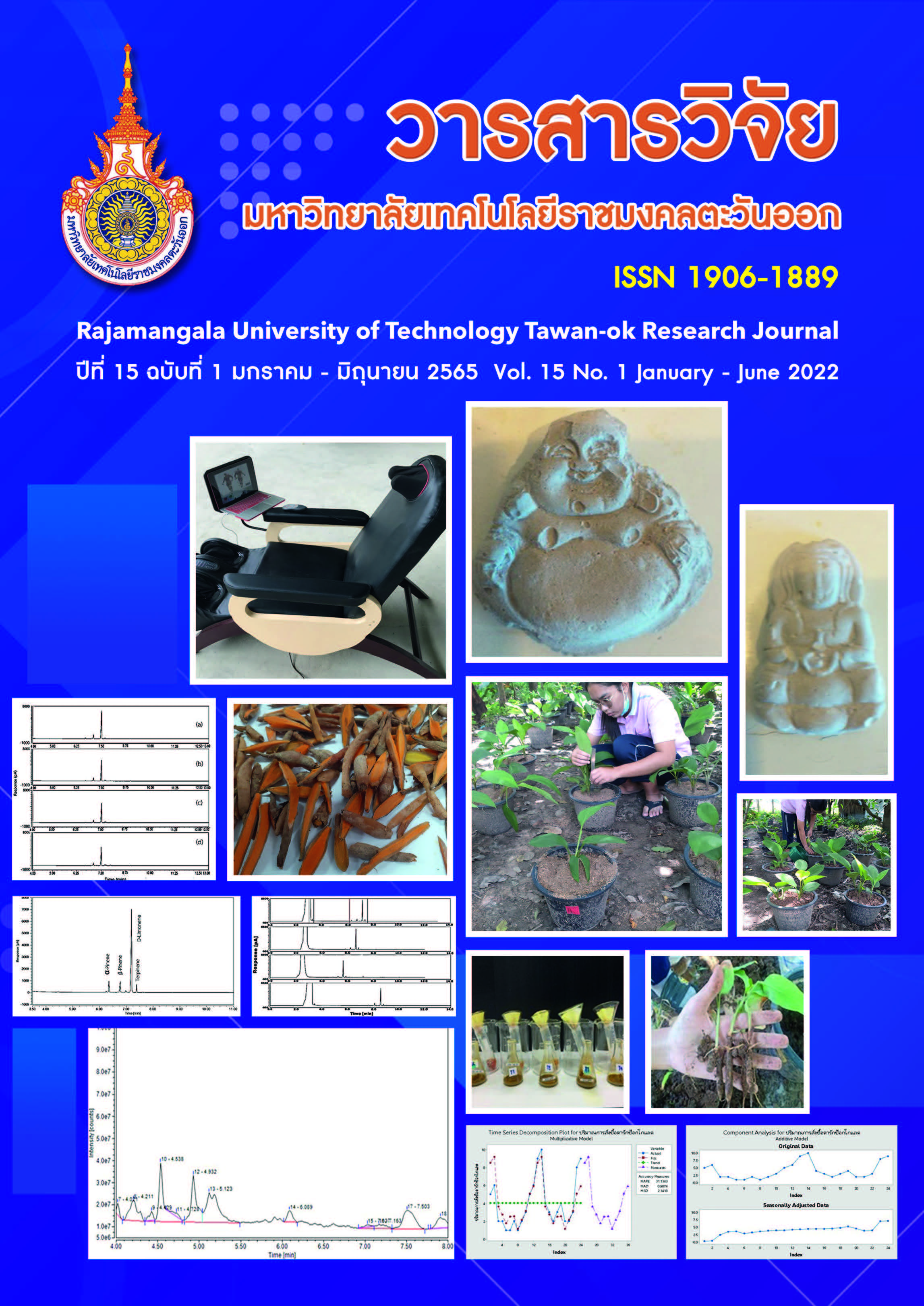Forensic Application of Headspace Gas Chromatography-Flame Ionization Detector (HS-GC-FID) to the Examination of Persistence and Transfer of Fragrance
Main Article Content
Abstract
Transferred trace fragrances can properly be used in forensic reconstruction scenarios and
can help to identify contacts between objects or people. The aim of this work was to study the
application of Dynamic Headspace Gas Chromatography equipped with flame Ionization detector (DHS-GC-FID) to the detection of perfume traces on fabrics and the transfer of perfume from fabric contact. Perfume were deposited on white cotton swatches and kept at room temperature for 1, 3, 6, 12 and 24 hours before analyzing by DHS-GC-FID. The most often found fragrance ingredients wereα-pinene, ß-pinene, d-limonene and terpinene. The persistence of perfume on cotton cloths was investigated. Approximately 90% losses in the contents of all perfume components were observed in the samples collected at 1 hours after deposition. However, the perfume components on the cloths kept for 24 hours were still detected (< 5%). The dynamics of perfume transfer as a factor of perfume contact time was also studied by placing another cotton swatch in contact with the one with perfume deposition. The longer contact time (10 - 60 minutes) contributed to a higher number of perfume components being transferred onto the contact cotton swatch. The results suggested that when the perfume component was more volatile the less persistence of it on the fabric would be and the perfume components was less likely to be transferred onto another swatch. This study demonstrates the capability of the method used to identify the fragrance transfer that may be applicable in cases of forensic examination.
Article Details

This work is licensed under a Creative Commons Attribution-NonCommercial-NoDerivatives 4.0 International License.
References
Aunahagate, I. 2014. Rape to death: some observations. Retrieved from https://tdri.or.th/2014/07/ rape-and-execute. (In Thai)
Davidson, A. R. 2017. A study of the potential evidential value of perfumes, antiperspirants and deodorants in forensic science. Doctoral thesis, Staffordshire University, UK.
Forensicchula. 2004. Important person, Edmond Locard. Retrieved from http://www.forensicchula. net/FMJ/journal/topic/locard.pdf. (In Thai)
Gherghel, S., R. M. Morgan, J. F. Arrebola-Liébanas, R. Romero-González, C. S. Blackman, A. Garrido-Frenich and I. P. Parkin. 2018. Development of a HS-SPME/GC–MS method for the analysis of volatile organic compounds from fabrics for forensic reconstruction applications. Forensic science international, 290, 207-218.
Gherghel, S., R. M. Morgan, J. F. Arrebola-Liébanas, C. S. Blackman and I. P. Parkin. 2019. Fragrance transfer between fabrics for forensic reconstruction applications. Science & Justice, 59(3), 256-267.
Gherghel, S., R. M. Morgan, C. S. Blackman, K. Karu and I. P. Parkin. 2016. Analysis of transferred fragrance and its forensic implications. Science & Justice, 56(6), 413-420.
Gordon, A., and S. Coulson. 2004. The evidential value of cosmetic foundation smears in forensic casework. Journal of Forensic Science, 49(6), JFS2004176-2004179
Katajit, P. 2018. Chemistry of perfume. Retrieved from https://www.scimath.org/article-chemistry/ item/7851-2018-02-22-02-20-01. (In Thai)
Khmerwe. 2014. Chapter 2 Evidence. Retrieved from http://khmerwe.blogspot.com/2014/11/44.html. (In Thai)
Rastogi, S., S. Heydorn, J. Johansen and D. Basketter. 2001. Fragrance chemicals in domestic and occupational products. Contact dermatitis, 45(4), 221-225.
Rastogi, S. C. 1995. Analysis of fragrances in cosmetics by gas chromatography-mass spectrometry. Journal of High Resolution Chromatography, 18(10), 653-658.
Snow, N., and G. Bullock. 2010. Novel techniques for enhancing sensitivity in static headspace extraction-gas chromatography. Journal of Chromatography A, 1217(16), 2726-2735.
Srima, S. 2020. The role of forensic science in the judicial process. Retrieved from https://library. parliament.go.th/th/radioscript/bthbathnitiwithyasastrkabkrabwnkaryutithrrm. (In Thai)
Teodoro, J., H. Pereira, D. Correia, M. Sena, E. Piccin and R. Augusti. 2017. Forensic discrimination between authentic and counterfeit perfumes using paper spray mass spectrometry and multivariate supervised classification. Analytical Methods, 9(34), 4979-4987.
Techasomboon, S. 2017. Forensic Science and enhancement of justice. Retrieved from http:// www.dsdw2016.dsdw.go.th/doc_pr/ndc_2560-2561/PDF/8546p. (In Thai)


